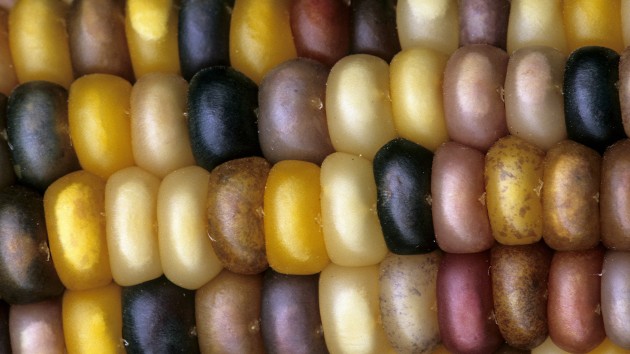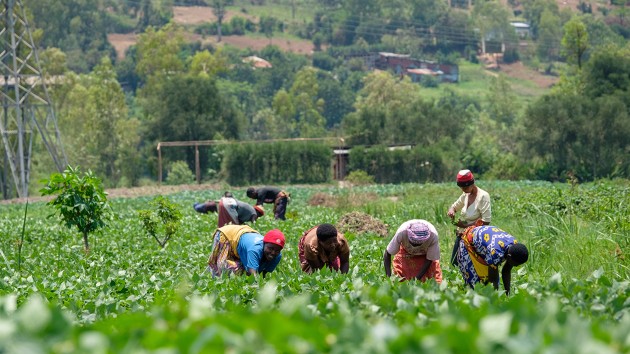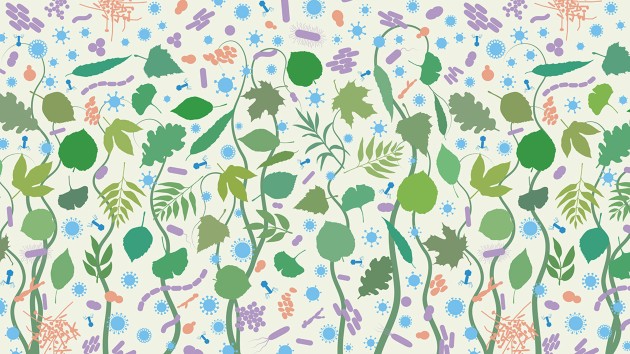Collection |
Collections
Filters
-
Collection Type
-
-
Collection |
 Plant jumping genes: celebrating the legacy of Barbara McClintock
Plant jumping genes: celebrating the legacy of Barbara McClintock
Barbara McClintock was an American geneticist at the Cold Spring Harbor Laboratory, who dedicated her career to the study of hereditary traits in maize.
Image: Ed Reschke/Getty -
Collection |
 Progress towards the Sustainable Development Goals
Progress towards the Sustainable Development Goals
The year 2023 marks the mid-point of the 15-year period envisaged to achieve the Sustainable Development Goals, targets for global development adopted in September 2015 by all United Nations Member States.
Image: © Springer NatureOpen for submissions -
Collection |
 Extracellular vesicles
Extracellular vesicles
Selected, recent articles from across the Nature Portfolio that document the recent progress in understanding the biology of EV-mediated cell–cell communication and advances in clinical translation of EVs.
Image: Vicky Summersby -
Collection |
 Research in support of COP26
Research in support of COP26
This November, world leaders will meet in Glasgow, UK for the 26th Conference of the Parties (COP26) to discuss action on the Paris Agreement and the UN Framework Convention on Climate Change.
Image: Valentina Monaco/Springer Nature Limited -
Collection |
 Sustainable solutions to end hunger
Sustainable solutions to end hunger
Effective agricultural interventions could aid efforts to find sustainable solutions for ending hunger. In this collection, we present evidence-based recommendations from the Ceres2030 team on where to prioritize spending on interventions to achieve zero hunger by 2030.
Image: Camille Delbos/Art In All of Us/ Getty -
Collection |
 The plant microbiome
The plant microbiome
The UN General Assembly proclaimed that 2020 is the International Year of Plant Health to recognize and protect plant health, and to raise awareness of the crucial role of plant health in ecosystem health, food security and human health. Plants host diverse microbial communities that are associated with plant roots, the phyllosphere, rhizosphere and the endosphere, and comprise bacteria, fungi, protists, nematodes and viruses. Numerous studies from different fields of research have expanded our knowledge of the complex interactions between the plant, the associated microbial communities as well as the environment, and provided insights into the ecology and functions of this co-association, including the appreciation that the plant microbiota is important for plant growth, fitness, stress resilience and health. Such an increased understanding opens up the possibility to harness plant-associated communities for sustainable plant production and agricultural practises and to protect plants from the effects of climate change and human activities that lead to a decrease in biodiversity and the spread of plant diseases. This Collection contains Reviews and Research articles from across the Nature group of journals that cover the latest advances in plant microbiome research, addressing critical knowledge gaps that need to be addressed, such as a better understanding of the assembly of the plant-associated microbial communities, their dynamics, metabolic interactions or functional properties.
Image: Philip Patenall/Springer Nature Limited -
Collection |
 The 3D genome
The 3D genome
This collection includes recent articles from across the Nature group of journals and showcases both the latest advances in the methodologies used to study genome organization, and our recent understanding of how genome organization and nuclear architecture regulate gene expression, cell fate and cell function in physiology and disease.
Image: V. Summersby -
Collection |
 Nature Plants – Celebrating our 3rd Anniversary
Nature Plants – Celebrating our 3rd Anniversary
It certainly doesn’t feel like three years since the first papers were published in Nature Plants on the 8th January 2015. However, as Nature Plants embarks on its 4th volume this seems like a good time to look back on the research we have published in the last three years. It is always difficult choosing the ‘highlights’ from such a wide-ranging collection of research, so for this anniversary we have looked to see which have been the highest performers by a few measures. The most read papers as judged by the number of times that they have been downloaded from our site. The most cited papers from each of the three years of Nature Plant’s run. And finally the most discussed papers as judged by the Altmetric scores that they have accrued. One interesting result of this exercise is the realisation that the top papers by each measure are not the same!

 Genome Editing
Genome Editing